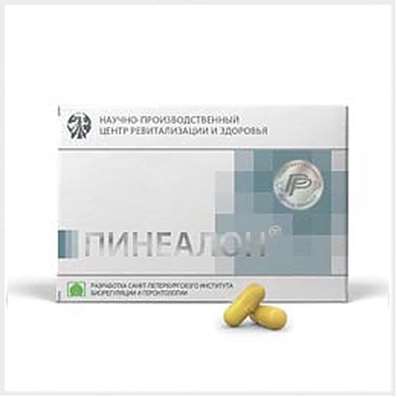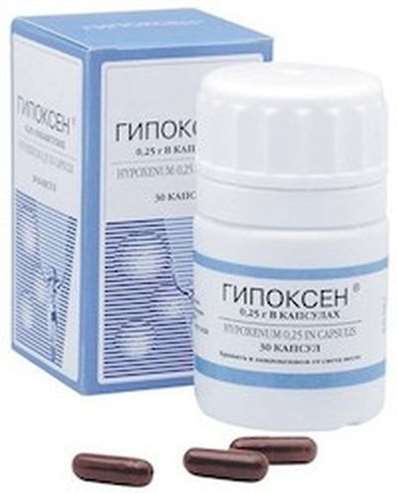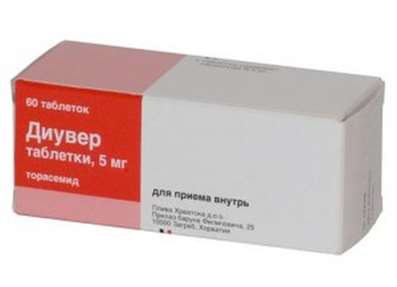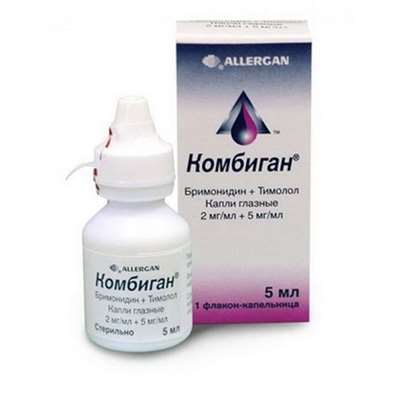Instruction for use: Bromocriptin-Richter
I want this, give me price
Dosage form: tablets
Active substance: Amantadine*
ATX
N04BB01 Amantadine
Pharmacological groups:
Dopaminomimetics
Anti-Parkinsonics
The nosological classification (ICD-10)
D24 Benign neoplasm of breast: Benign neoplasm of mammary gland; Benign mammary gland disease; Neoplastic processes in the mammary gland; Tumors of the mammary glands; Papilloma of the ducts of the mammary gland
D35.2 Benign neoplasm of pituitary gland: Pituitary adenoma; Prolactinomas; Macro-prolaktinoma; Microprolactinoma; Prolactinoma; Somatoliberinoma; Aumada del Castillo Syndrome Tumors of the pituitary and suprasellar region
D44.3 Neoplasm of uncertain or unknown pituitary nature: Macropropolactinoma; Microprolactinoma; Prolactinoma; Somatoliberinoma; Prolactinomas
E22.0 Acromegaly and pituitary gigantism: Pituitary gigantism; Acromegaly; Dysfunction of growth hormone secretion
E22.1 Hyperprolactinaemia: Hyperprolactinemia medication; Hyperprolactinaemia with infertility; Hyperprolactinemia in men; Hyperproduction of prolactin; Idiopathic hyperprolactinemia; Chiari-Frommel Syndrome; Forbes-Albright Syndrome; Tumor galactorrhea; Argonsa del Castillo Syndrome; Forbes-Albright Syndrome
E23.0 Hypopituitarism: Kalmann's Syndrome; Infantilism pituitary; Dwarfism is cerebral-pituitary; Cachexia pituitary; Cachexia diencephalo-pituitary; Anovulatory disorders; Symmonds disease; Secondary hypogonadism in men; Secondary hypogonadotropic hypogonadism; Hypogenitalism; Hypogonadism; Hypogonadism hypogonadotropic; Hypogonadism of the pituitary; Hypogonadism in men; Hypogonadotropic hypogonadism; Hypopituitarism; Pituitary insufficiency; Lack of growth in children with hypopituitarism; Pangypopituitarism; Primary hypogonadism; Primary hypogonadotropic hypogonadism; Shihan Syndrome; Shihina's Syndrome; Symmonds-Glinsky disease; Laron's dwarfism; Sheena's Syndrome; Syndrome of a fertile eunuch
E28.2 Polycystic ovarian syndrome: Stein-Levental syndrome; Polycystic ovary; Polycystic ovary syndrome; Stein-Levental Syndrome; Sclerokrostoznaya disease of the ovaries; Stein-Leventhal syndrome; Polycystic ovary syndrome
E28.9 Ovarian dysfunction, unspecified: Support of luteal phase in spontaneous or induced menstrual cycle; Support of the luteal phase during preparation for in vitro fertilization; Secondary hypofunction of the ovaries; Reduced function of the sex glands; Disturbance in the luteal phase of the ovarian cycle; Insufficiency of the luteal phase of the cycle; Estrogen insufficiency; Incomplete maturation of the follicle
F52.0 Absence or loss of sexual desire: Hypoexuality; Decreased libido; Sexual weakness in elderly men; Restoring sexual desire; Frigidity; Weakening of libido; Lack of sexual desire
F52.2 Lack of genital response: Secondary impotence; hyposexuality; Impotence; Impotence on the basis of neurasthenia; Impotence against the background of functional nervous disorders; Impotence of different origin; Violation potency; erectile Dysfunction; potency Disorders; erectile dysfunction; Erectile dysfunction of various origins; Lack of erection; The weakening of potency; The weakening of sexual activity; The weakening of erection; Lowering the male potency; Sexual disorders in men; Sexual dysfunction; Weak potency; Reduced potency; Reduced potency; erectile disfunction; Erectile dysfunction, neurogenic
G20 Parkinson's disease: A trembling paralysis; Idiopathic Parkinsonism; Parkinson's disease; Symptomatic Parkinsonism
G21.3 Postencephalitic Parkinsonism: Postencephalic Parkinsonism; Postencephalitic Parkinsonism; Postencephalic Parkinson's Syndrome; Parkinsonism postencephalitic
N60.1 Diffuse cystic mastopathy: Benign cystic change in mammary glands; Cystic fibrosis mastopathy; Fibrous-cystic mastopathy; Pre-cancerous condition of mammary glands; Benign mammary gland disease; Benign breast tumor
N61 Inflammatory Diseases of the Breast: Mastitis; Purulent mastitis; Non-sprout mastitis; Postpartum mastitis; Mastitis
N64.4 Mastodynia: Mastalgia; Soreness of the mammary glands; Cooper's disease
N91 Absence of menstruation, meager and rare menstruation: Amenorrhea; Amenorrhea hypogonadotropic; Amenorrhea is prolactin-dependent; Oligomenorrhoea; Shortening of the secretory phase of the menstrual cycle; Menstrual disorders; Menstruation disorders; Prolactin-dependent amenorrhea without galactorrhea
N91.2 Amenorrhea, unspecified: Diagnosis of amenorrhea; Lack of menstrual cycle; Congenital amenorrhea
N91.5 Oligomenorrhea, unspecified: Expressed oligomenorrhoea
N94.3 Premenstrual tension syndrome: Pronounced premenstrual syndrome; Menstrual psychosomatic disorder; Menstrual syndrome; Premenstrual tension; Premenstrual status; Premenstrual period; Premenstrual syndrome; Menstruation syndrome
N94.6 Unspecified Dysmenorrhea: Pain in menstruation; Functional disorders of the menstrual cycle; Functional disorders of the menstrual cycle; Menstrual cramps; Menstruation disorder; Pain during menstruation; Painful irregular menstruation; Algodismenorea; Algomenorea; Pain syndrome with smooth muscle spasms; Pain syndrome with smooth muscle spasms (renal and biliary colic, intestinal spasm, dysmenorrhea); Pain syndrome with spasms of smooth muscles of internal organs (renal and biliary colic, intestinal spasm, dysmenorrhea); Disalgomenorrhea; Dysmenorrhea; Dysmenorrhea (essential) (exfoliative); Menstrual disorder; Menstruation painful; Metrorrhagia; Violation of the menstrual cycle; Menstrual irregularities; Prolactin-dependent disorder of the menstrual cycle; Prolactin-dependent disorder of menstrual function; Pain syndrome with spasms of smooth muscles of internal organs; Spastic dysmenorrhea; Primary disalgomenorrhea
N97 Female infertility: Female infertility in anovulation; Hyperprolactinemic infertility; Hyperprolactinaemia with infertility; Endocrine infertility; Infertility due to hypothalamic-pituitary dysfunction; Infertility infertility; Infertility; Infertility on the background of hyperprolactinaemia; Functional infertility; Marriage is infertile; Infertility of ovarian genesis; Stimulation of the growth of a single follicle
N97.0 Female infertility associated with lack of ovulation: Anovulation; Stimulation of ovulation; Stimulation of a single dominant follicle; Stimulation of the growth of multiple follicles; Anovulatory dysfunction of the ovaries; Anovulatory cycle; Induction of ovulation in the treatment of infertility; Infringement of an ovulation; Anovulatory infertility; Infertility due to anovulation or inadequate maturation of the follicle; The hormone-dependent pathology of the reproductive system; Anovulation chronic; Anovulatory cycles; Infertility associated with anovulation; Incomplete maturation of the follicle
N97.8 Other forms of female infertility: Prolactin-dependent female infertility
O92.7 Other and unspecified disorders of lactation: Lactation; Lactostasis in the early postpartum period
O92.7.0 * Lactostasis: Lactostasis in the early postpartum period
R14 Meteorism and related conditions: Bloating; Inflammation of the intestine; Severe flatulence; Gases in the postoperative period; Degassing of the intestine before diagnostic tests; Degassing of the intestine before X-ray examination; Gas retention; Excess formation and accumulation of gases in the gastrointestinal tract; Sour eructation; Flatulence; Meteorism with increased gas formation in the digestive tract; Flatulence in infants; Flatulence in newborns; Flatulence due to fatty or unusual food; The flatulence caused by the disease of the digestive system; Belching; Sensation of bloating; Sensation of stomach overflow; Increased gas formation; Enhanced gas generation and accumulation of gases in the gastrointestinal tract; Feeling of overfilling in epigastrium; A feeling of overflow of the stomach; Feeling of heaviness in the stomach; Increased gas formation in the gastrointestinal tract; Increased formation and accumulation of gases in the digestive tract
R60 Edema, not elsewhere classified: Painful edema after injuries or surgeries; Painful swelling after surgery; Dropsy; Dystrophic alimentary edema; Lymphostasis and swelling after treatment of breast cancer; Edema due to sprains and bruises; Edema caused by the constitution; Edema of renal origin; Peripheral edema; Otecno-ascitic syndrome with cirrhosis of the liver; Edema Syndrome; Intestinal intoxication syndrome; Edema on the background of secondary hyperaldosteronism; Oedemia of hepatic genesis; Edema syndrome with heart disease; Edema syndrome with congestive heart failure; Edema syndrome with heart failure; Edema syndrome with heart failure or liver cirrhosis; Pastosity; Peripheral congestive edema; Peripheral edema; Hepatic edematous syndrome; Premenstrual edema; Cardiac edematous syndrome; Iatrogenic edema
Z100 * CLASS XXII Surgical practice: Abdominal surgery; adenomectomy; Amputation; Coronary angioplasty; Angioplasty of the carotid arteries; Antiseptic skin treatment for wounds; Antiseptic Hand; Appendectomy; atherectomy; Balloon coronary angioplasty; Vaginal hysterectomy; The coronary bypass; Interventions in the vagina and cervix; Interventions on the bladder; Intervention in the mouth; Restoration and reconstructive surgery; Hand hygiene of medical personnel; Gynecologic surgery; Gynecological intervention; Gynecological surgery; Hypovolemic shock during operations; Disinfection of purulent wounds; Disinfection of wounds edges; Diagnostic intervention; Diagnostic procedures; Cervical Diathermocoagulation; Long-surgery; Replacing the fistula catheters; Infection in orthopedic surgery; Artificial heart valve; cystectomy; Short-term outpatient surgery; Short-term operation; Short surgical procedures; Krikotireotomiya; Blood loss during surgery; Bleeding during surgery and in the postoperative period; Kuldotsentez; laser photocoagulation; laser coagulation; retinal laser coagulation; Laparoscopy; Laparoscopy in Gynecology; CSF fistula; Small gynecological operations; Small surgical procedures; Mastectomy and subsequent plastic; mediastinotomy; Microsurgical operations on the ear; Mukogingivalnye operation; suturing; Minor surgery; neurosurgical operation; Immobilization of the eyeball in ophthalmic surgery; testectomy; pancreatectomy; Perikardektomiya; The period of rehabilitation after surgery; The period of convalescence after surgery; Percutaneous transluminal coronary angioplasty; Pleural thoracentesis; Pneumonia postoperative and posttraumatic; Preparation for surgical procedures; Preparation for surgery; Preparation of the surgeon's hands before surgery; Preparation of the colon for surgical procedures; Postoperative aspiration pneumonia in neurosurgical and thoracic surgery; Postoperative nausea; Postoperative bleeding; postoperative granuloma; postoperative shock; The early postoperative period; myocardial revascularization; Radiectomy; gastric Resection; bowel resection; uterine Resection; liver Resection; enterectomy; Resection of part of the stomach; Reocclusion of the operated vessel; Bonding tissues during surgical procedures; Removal of sutures; Condition after eye surgery; Condition after surgery; Condition after surgery in the nasal cavity; Condition after gastrectomy; Status after resection of the small intestine; Condition after tonsillectomy; Condition after removal of the duodenum; Condition after phlebectomy; Vascular surgery; Splenectomy; Sterilization of surgical instruments; Sterilization of surgical instruments; sternotomy; Dental surgery; Dental intervention in periodontal tissues; strumectomy; Tonsillectomy; Thoracic surgery; Thoracic surgery; total gastrectomy; Transdermal intravascular coronary angioplasty; Transurethral resection; Turbinektomiya; Removal of a tooth; cataract surgery; Removal of cysts; tonsillectomy; Removal of fibroids; Removing the mobile primary teeth; Removing polyps; Removing broken tooth; Removal of the uterus body; Removal of sutures; Fistula likvoroprovodyaschih ways; Frontoetmoidogaymorotomiya; Surgical infection; Surgical treatment of chronic limb ulcers; Surgery; The surgery in the anal area; The surgery on the colon; Surgical practice; The surgical procedure; Surgical interventions; Surgery on the gastrointestinal tract; Surgical procedures on the urinary tract; Surgical procedures on the urinary system; Surgical intervention of the genitourinary system; Surgical procedures on the heart; Surgical manipulation; surgery; Surgery on the veins; Surgical intervention; Vascular surgery; Surgical treatment of thrombosis; Surgery; cholecystectomy; Partial gastric resection; hysterectomy; Percutaneous transluminal coronary angioplasty; Percutaneous transluminal angioplasty; Coronary artery bypass; tooth Extirpation; Extirpation of milk teeth; pulpectomy; pulsative cardiopulmonary bypass; tooth Extraction; teeth Extraction; cataract extraction; Electrocoagulation; endourological intervention; episiotomy; Etmoidotomiya; Complications after tooth extraction
Composition
Tablets - 1 table.
active substance: Bromocriptine mesylate 2.87 mg
(Corresponding to 2.5 mg of bromocriptine)
Auxiliary substances: silicon colloidal dioxide - 0,65 mg; Magnesium stearate - 1.3 mg; Talc - 3.9 mg; Povidone - 5.2 mg; Corn starch - 35.08 mg; MCC - 40 mg; Lactose monohydrate 41 mg
Pharmachologic effect
Mode of action - antiparkinsonian, dopaminergic.
Dosing and Administration
Inside, with food.
Violations of the menstrual cycle, female infertility: 1.25 mg 2-3 times a day, if necessary, the dose is gradually increased to 5-7.5 mg / day. Treatment should continue until the normalization of the menstrual cycle and / or the restoration of ovulation, and for the prevention of relapse - for several menstrual cycles.
Premenstrual syndrome: treatment is started on day 14 of the menstrual cycle with 1.25 mg / day, then the dose is gradually increased by 1.25 mg / day to 5 mg / day (before menstruation).
Hyperprolactinemia in men: 1.25 mg 2-3 times a day, gradually increasing the dose to 5-10 mg / day.
Prolactinomas: 1.25 mg 2-3 times a day, gradually increasing the dose to several tablets per day, providing the desired level of prolactin in the blood.
Acromegaly: the initial dose is 1.25 mg 2-3 times a day, then depending on the clinical effect and severity of side effects, you can increase the daily dose to 10-20 mg.
To prevent lactation: on the first day - 1, 25 mg 2 times a day, morning and evening, then - 5 mg (2.5 mg twice a day) for 14 days. Treatment should begin several hours after childbirth or abortion, but not in the first 4 hours after them - after stabilization of vital body functions. After 2-3 days after the drug has been discontinued, there may be a slight secretion of milk, for the elimination of which it is necessary to continue therapy with the same dose for another 1 week.
Beginning postpartum mastitis: see To prevent lactation. If necessary, therapy with antibiotics.
Postnatal engorgement of the mammary glands: 2.5 mg once, after 6-12 hours the dose can be repeated, undesirable stopping of lactation does not occur.
Benign breast diseases: 1.25 mg 2-3 times a day, the dose is gradually increased to 5-7.5 mg / day.
Parkinson's disease: to ensure optimal tolerability, treatment starts with a small dose of 1.25 mg once a day, preferably in the evening, for 1 week. The dose is gradually (weekly) increased by 1.25 mg, divided into 2-3 doses per day. The therapeutic effect occurs within 6-8 weeks of treatment, otherwise you can continue to increase the daily dose, weekly increasing it by 2.5 mg / day. The average therapeutic dose for mono- and combination therapy is 10-30 mg / day. The maximum daily dose is 30 mg. In case of side effects, the daily dose is reduced, after each next decrease the dose is prescribed for at least 1 week. With the disappearance of unwanted reactions, the dose can be increased again. Patients with locomotor disorders noted on the background of taking levodopa are advised to lower the dose of levodopa before using bromocriptine. In the case of a satisfactory therapeutic effect, a further gradual decrease in the dose of levodopa can be continued, sometimes until it is completely canceled. Treatment with bromocriptine should be started simultaneously with the development of side effects of levodopa, for example, dyskinesia, impairment by the end of the dose of levodopa, associated with a decrease in the duration of the single dose (effect of end of dose), starting with the minimum effective dose of bromocriptine. Higher doses are used in exceptional cases.
Release form
Tablets, 2.5 mg. In a brown glass vial of hydrolytic class III, 30 pcs. Each. On 1 ˘Ű. In a cardboard box.
Manufacturer
OJSC Gedeon Richter. 1103, Budapest, st. Demrei, 19-21, Hungary.
Terms of leave from pharmacies
On prescription.
Storage conditions of the drug Bromocriptin-Richter
In the dark place at a temperature of no higher than 30 ░ C.
Keep out of the reach of children.
Shelf life of the drug Bromocriptin-Richter
3 years.
Do not use after the expiry date printed on the package.

 Cart
Cart





